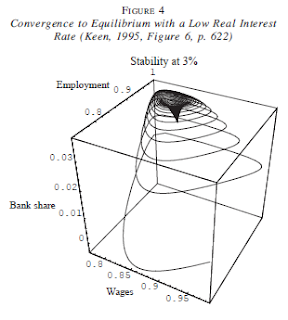Earlier, I gave evidence for a surprising relationship between the amount of G+C (guanine plus cytosine) in DNA and the amount of "purine loading" on the message strand in coding regions. The fact that message strands are often purine-rich is not new, of course; it's called Szybalski's Rule. What's new and unexpected is that the amount of G+C in the genome lets you predict the amount of purine loading. Also, Szybalski's rule is not always right.
Since the last time I wrote on this subject, I've had the chance to look at more than 1,000 additional genomes. What I've found is that the relationship between purine loading and G+C content applies not only to bacteria (and archaea) and eukaryotes, but to mitochondrial DNA, chloroplast DNA, and virus genomes (plant, animal, phage), as well.
The accompanying graphs tell the story, but I should explain a change in the way these graphs are prepared versus the graphs in my earlier posts. Earlier, I plotted G+C along the X-axis and purine/pyrmidine ratio on the Y-axis. I now plot A+T on the X-axis instead of G+C, in order to convert an inverse relationship to a direct relationship. Also, I now plot A+G (purines, as a mole fraction) on the Y-axis. Thus, X- and Y-axes are now both expressed in mole fractions, hence both are normalized to the unit interval (i.e., all values range from 0..1).
The graph above shows the relationship between genome A+T content and purine content of message strands in genomes for 260 bacterial genera. The straight line is regression-fitted to minimize the sum of squared absolute error. (Software by http://zunzun.com.) The line conforms to:
The line predicts that if a genome were to consist entirely of G+C (guanine and cytosine), it would be 45.54% guanine, whereas if (in some mythical creature) the genome were to consist entirely of A+T (adenine and thymine), adenine would comprise 59.99% of the DNA. Interestingly, the 95% confidence interval permits a value of 0.61803 at X = 1.0, which would mean that as guanine and cytosine diminish to zero, A/T approaches the Golden Ratio.
Do the most primitive bacteria (Archaea) also obey this relationship? Yes, they do. In preparing the graph below, I analyzed codon usage in 122 Archaeal genera to obtain A, G, T, and C relative proportions in coding regions of genes. As you can see, the same basic relationship exists between purine content and A+T in Archaea as in Eubacteria. Regression analysis yielded a line with a slope of 0.16911 and a vertical offset 0.45865. So again, it's possible (or maybe it's just a very strange coincidence) that A/T approaches the Golden Ratio as A+T approaches unity.
For the graph below, I analyzed 114 eukaryotic genomes (everything from fungi and protists to insects, fish, worms, flowering and non-flowering plants, mosses, algae, and sundry warm- and cold-blooded animals). The slope of the generated regression line is 0.11567 and the vertical offset is 0.46116.
Mitochondria and chloroplasts (see the two graphs below) show a good bit more scatter in the data, but regression analysis still comes back with positive slopes (0.06702 and .13188, respectively) for the line of least squared absolute error.
To see if this same fundamental relationship might hold even for viral genetic material, I looked at codon usage in 229 varieties of bacteriophage and 536 plant and animal viruses ranging in size from 3Kb to over 200 kilobases. Interestingly enough, the relationship between A+T and message-strand purine loading does indeed apply to viruses, despite the absence of dedicated protein-making machinery in a virion.
For the 536 plant and animal viruses (above left), the regression line has a slope of 0.23707 and meets the Y-axis at 0.62337 when X = 1.0. For bacteriophage (above right), the line's slope is 0.13733 and the vertical offset is 0.46395. (When inspecting the graphs, take note that the vertical-axis scaling is not the same for each graph. Hence the slopes are deceptive.) The Y-intercept at X = 1.0 is 0.60128. So again, it's possible A/T approaches the golden ratio as A+T approaches 100%.
The fact that viral nucleic acids follow the same purine trajectories as their hosts perhaps shouldn't come as a surprise, because viral genetic material is (in general) highly adapted to host machinery. Purine loading appropriate to the A+T milieu is just another adaptation.
It's striking that so many genomes, from so many diverse organisms (eubacteria, archaea, eukaryotes, viruses, bacteriophages, plus organelles), follow the same basic law of approximately
The above law is as universal a law of biology as I've ever seen. The only question is what to call the slope term. It's clearly a biological constant of considerable significance. Its physical interpretation is clear: It's the rate at which purines are accumulated in mRNA as genome A+T content increases. It says that a 1% increase in A+T content (or a 1% decrease in genome G+C content) is worth a 0.14% increase in purine content in message strands. Maybe it should be called the purine rise rate? The purine amelioration rate?
Biologists, please feel free to get in touch to discuss. I'm interested in hearing your ideas. Reach out to me on LinkedIn, or simply leave a comment below.
reade more...
Since the last time I wrote on this subject, I've had the chance to look at more than 1,000 additional genomes. What I've found is that the relationship between purine loading and G+C content applies not only to bacteria (and archaea) and eukaryotes, but to mitochondrial DNA, chloroplast DNA, and virus genomes (plant, animal, phage), as well.
The accompanying graphs tell the story, but I should explain a change in the way these graphs are prepared versus the graphs in my earlier posts. Earlier, I plotted G+C along the X-axis and purine/pyrmidine ratio on the Y-axis. I now plot A+T on the X-axis instead of G+C, in order to convert an inverse relationship to a direct relationship. Also, I now plot A+G (purines, as a mole fraction) on the Y-axis. Thus, X- and Y-axes are now both expressed in mole fractions, hence both are normalized to the unit interval (i.e., all values range from 0..1).
The graph above shows the relationship between genome A+T content and purine content of message strands in genomes for 260 bacterial genera. The straight line is regression-fitted to minimize the sum of squared absolute error. (Software by http://zunzun.com.) The line conforms to:
y = a + bx
where:
a = 0.45544384965539358
b = 0.14454244707261443
The line predicts that if a genome were to consist entirely of G+C (guanine and cytosine), it would be 45.54% guanine, whereas if (in some mythical creature) the genome were to consist entirely of A+T (adenine and thymine), adenine would comprise 59.99% of the DNA. Interestingly, the 95% confidence interval permits a value of 0.61803 at X = 1.0, which would mean that as guanine and cytosine diminish to zero, A/T approaches the Golden Ratio.
Do the most primitive bacteria (Archaea) also obey this relationship? Yes, they do. In preparing the graph below, I analyzed codon usage in 122 Archaeal genera to obtain A, G, T, and C relative proportions in coding regions of genes. As you can see, the same basic relationship exists between purine content and A+T in Archaea as in Eubacteria. Regression analysis yielded a line with a slope of 0.16911 and a vertical offset 0.45865. So again, it's possible (or maybe it's just a very strange coincidence) that A/T approaches the Golden Ratio as A+T approaches unity.
.png) |
| Analysis of coding regions in 122 Archaea reveals that the same relationship exists between A+T content and purine mole-fraction (A+G) as exists in eubacteria. |
 |
| Eukaryotic organisms (N=114). |
Mitochondria and chloroplasts (see the two graphs below) show a good bit more scatter in the data, but regression analysis still comes back with positive slopes (0.06702 and .13188, respectively) for the line of least squared absolute error.
|
|
|
|
The fact that viral nucleic acids follow the same purine trajectories as their hosts perhaps shouldn't come as a surprise, because viral genetic material is (in general) highly adapted to host machinery. Purine loading appropriate to the A+T milieu is just another adaptation.
It's striking that so many genomes, from so many diverse organisms (eubacteria, archaea, eukaryotes, viruses, bacteriophages, plus organelles), follow the same basic law of approximately
A+G = 0.46 + 0.14 * (A+T)
The above law is as universal a law of biology as I've ever seen. The only question is what to call the slope term. It's clearly a biological constant of considerable significance. Its physical interpretation is clear: It's the rate at which purines are accumulated in mRNA as genome A+T content increases. It says that a 1% increase in A+T content (or a 1% decrease in genome G+C content) is worth a 0.14% increase in purine content in message strands. Maybe it should be called the purine rise rate? The purine amelioration rate?
Biologists, please feel free to get in touch to discuss. I'm interested in hearing your ideas. Reach out to me on LinkedIn, or simply leave a comment below.

.png)
.png)













